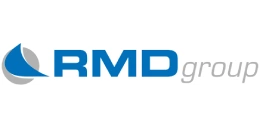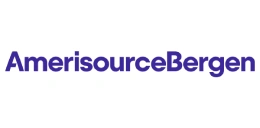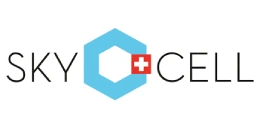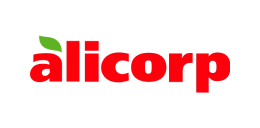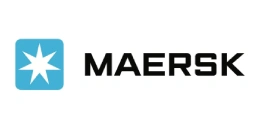How to Setup an Unsaturated Polyester Resin Production Plant: A Complete Business Plan
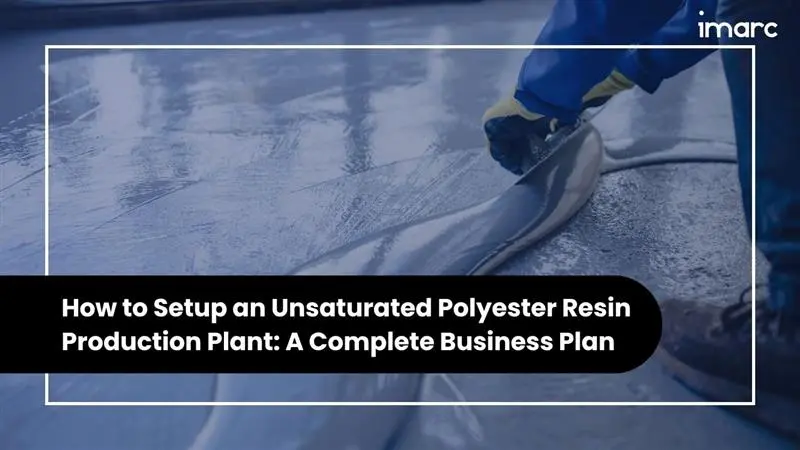
Establishing a production facility for Unsaturated Polyester Resin (UPR) requires in-depth knowledge of the product, its production techniques, and the numerous elements that contribute to the plant’s overall effectiveness. Entrepreneurs must navigate multiple complexities—from conducting thorough market research to overseeing final implementation. Key considerations include securing raw materials, designing an efficient plant layout, choosing the right machinery, analyzing market trends, and ensuring compliance with regulatory standards. This guide aims to serve as a detailed roadmap, addressing critical information gaps and delivering practical insights into every stage of launching a UPR production unit.
This article is crafted to assist aspiring entrepreneurs throughout their entire journey by deconstructing the key elements of Unsaturated Polyester Resin (UPR), examining its versatile characteristics and wide-ranging uses, and detailing the fundamental steps required to launch a production facility. Whether you're in the early stages of assessing UPR’s market potential or looking for comprehensive insights into its technical and financial dimensions, this guide offers an all-encompassing perspective to help you navigate and succeed in the UPR industry.
Global Market Analysis: Demand and Growth Drivers for UPR
The global demand for Unsaturated Polyester Resin (UPR) has been on a consistent upward trajectory, fueled by its expanding use across multiple sectors. Forecasts indicate that by 2033, the UPR market will reach a valuation of USD 21.35 billion, growing at a compound annual growth rate (CAGR) of 4.81% between 2025 and 2033. This rising adoption is influenced by several key factors, such as innovations in production technologies, evolving consumer demands, and the increasing scope of industrial applications. For entrepreneurs planning to venture into UPR production, gaining a clear understanding of these market trends and growth enablers is crucial for making informed decisions.
Key Market Growth Drivers
- Industrialization and Urbanization in Developing Economies:
The accelerating pace of industrialization and urban expansion in developing nations plays a significant role in boosting the demand for Unsaturated Polyester Resin (UPR). As infrastructure projects multiply, industries such as construction and automotive increasingly seek materials that are both durable and economical. UPR stands out in this context, offering a lightweight, corrosion-resistant, and high-strength solution—making it a favored option for a wide range of applications across these rapidly growing regions.
- Demand for Lightweight and Durable Materials:
One of the primary factors contributing to the growth of the UPR market is the increasing demand for lightweight and durable materials, particularly in the automotive and aerospace industries. UPR composites offer a high strength-to-weight ratio, which is crucial for improving fuel efficiency and reducing emissions in vehicles and aircraft. As fuel efficiency regulations become stricter and environmental concerns continue to grow, the demand for lightweight UPR materials is expected to rise.
- Growth in the Construction Sector:
The construction industry remains one of the largest consumers of UPR, where it is used in applications such as pipes, tanks, building panels, and facades. As urbanization continues to increase globally, particularly in developing nations, the demand for UPR in construction applications is expected to rise. The material's resistance to weathering and chemical corrosion makes it an ideal choice for long-lasting building materials.
- Environmental Sustainability:
Growing awareness of environmental sustainability and the benefits of composite materials, such as their recyclability and long service life, is driving the UPR market. As industries seek to reduce their environmental footprint, UPR’s ability to provide durable, long-lasting solutions makes it an attractive option. Additionally, the push for reduced emissions and increased fuel efficiency in transportation sectors further amplifies the demand for UPR-based materials.
- Technological Advancements in UPR Production:
Innovations in UPR production processes are helping reduce production costs and improve the quality of the final product. New formulations and improved production techniques have made UPR more adaptable for a wider range of applications. These technological advancements are expected to support market growth by expanding the potential use cases of UPR and enhancing its performance characteristics.
- Rising Demand in the Marine Industry:
The marine industry, particularly in the production of boats, yachts, and other marine vessels, is another key growth driver. UPR’s resistance to water, chemicals, and UV radiation makes it a suitable choice for marine applications, ensuring that UPR remains in demand as the industry expands. Additionally, UPR composites help reduce the weight of marine vessels, improving performance and fuel efficiency.
Market Trends and Future Projections
- Growing Adoption of Composite Materials: As industries move toward more advanced and high-performance materials, UPR’s role in composite manufacturing is likely to expand. The material’s ability to be combined with fibers like glass or carbon to create lightweight, high-strength composites is making it increasingly popular in industries such as automotive, aerospace, and defense.
- Sustainability Focus: There is an increasing focus on developing UPR formulations that are more sustainable and environmentally friendly. Manufacturers are investing in the development of bio-based UPR resins and improved recycling techniques to meet growing demand for greener alternatives.
- Regional Market Growth: While UPR demand is widespread, significant growth is expected in emerging markets, especially in Asia Pacific, where industrial activities and urban development are surging. Countries like China and India are projected to experience robust demand for UPR, driven by their booming construction and automotive industries.
How to Set Up an Unsaturated Polyester Resin (UPR) Production Plant
Setting up a successful unsaturated polyester resin (UPR) production plant requires careful planning, an understanding of the production process, and a solid business strategy. From selecting the right location to procuring equipment and ensuring regulatory compliance, every step plays a crucial role in the smooth operation of the plant. Below is a step-by-step guide on how to establish a UPR production facility.
1. Feasibility Study and Business Plan
Before taking any physical steps toward setting up the plant, conducting a feasibility study is essential. This study will help determine the viability of the project by evaluating various factors, including market demand, raw material availability, cost estimates, and technical requirements.
- Market Analysis: Understand the demand for UPR in various industries such as construction, automotive, and marine. Research market trends and growth drivers, as well as potential competitors.
- Financial Projections: Estimate the initial investment required, operating costs, expected return on investment (ROI), and profitability margins. This financial analysis will guide funding decisions and operational strategies.
- Risk Assessment: Identify potential risks associated with the project, such as fluctuations in raw material prices, regulatory changes, or market downturns.
A comprehensive business plan should be developed based on the feasibility study. This plan should outline the plant's objectives, operational strategies, production capacity, and financial projections. The business plan will also be useful for securing financing from banks or investors.
2. Land and Site Development
The location of the plant plays a critical role in its overall success. The site must be strategically chosen to ensure easy access to raw materials, transportation routes, and skilled labor.
- Site Selection: Consider factors such as proximity to raw material suppliers, transportation infrastructure (e.g., roads, ports), and workforce availability. Additionally, the site should comply with local zoning and environmental regulations.
- Land Development: Once the site is selected, develop the land to accommodate the plant’s infrastructure. This includes site grading, constructing roads, drainage systems, and providing utilities like electricity and water.
A well-planned site layout ensures that the production process runs smoothly, minimizing operational inefficiencies and downtime.
3. Plant Layout and Civil Works
Designing the plant layout is an essential step that ensures the efficient flow of materials through the production process. The layout must also prioritize worker safety, product quality, and environmental protection.
- Production Line Design: The design should allow for the smooth movement of raw materials through each stage of the production process (esterification and blending). This includes the placement of reactors, blending tanks, and storage units.
- Safety and Compliance: Safety protocols must be incorporated into the layout, with provisions for ventilation, fire suppression, and chemical spill containment. Adequate space for emergency exits and safety equipment is necessary.
- Civil Works: The construction of buildings and facilities includes the main production facility, administrative block, warehouse, laboratories, and ancillary services such as restrooms and employee break rooms.
A well-designed plant layout optimizes production efficiency, reduces material handling time, and ensures the health and safety of workers.
4. Machinery and Equipment Procurement
The selection of machinery and equipment is a critical step in ensuring the quality and efficiency of UPR production. The equipment required will depend on the scale of production and the specific processes involved.
- Reactor: A high-quality stainless steel reactor is needed for the esterification stage. The reactor must be capable of withstanding high temperatures (190°C to 220°C) and pressures, and it should have an agitator and condenser for maintaining optimal reaction conditions.
- Blending Tank: A specialized tank is required for blending the prepolymer with styrene. The tank should have mixing capabilities and be able to maintain the desired temperature and viscosity of the resin.
- Storage Tanks: Tanks for storing raw materials and the final UPR product are necessary. These tanks should be designed to prevent contamination and be equipped with safety features.
- Pumps and Piping: A network of pumps and piping is needed to transfer materials between different sections of the plant.
- Cooling and Pollution Control Systems: Cooling towers are used to regulate the temperature of the process water, and scrubbers help control air pollution, ensuring compliance with environmental regulations.
Careful selection and procurement of the right machinery will ensure the plant operates smoothly and produces high-quality UPR.
5. Raw Material Procurement
A steady and reliable supply of raw materials is crucial to maintaining uninterrupted production. The main raw materials required for UPR production are:
- Glycols: Propylene glycol, ethylene glycol, and diethylene glycol.
- Dibasic Acids/Anhydrides: Maleic anhydride, phthalic anhydride, and isophthalic acid.
- Styrene: The monomer used for cross-linking during the blending stage.
- Inhibitors: Chemicals such as hydroquinone or tertiary butyl catechol, used to prevent premature polymerization.
Establishing long-term contracts with reliable suppliers will help ensure a consistent supply of these materials at competitive prices.
6. Manpower and Skill Requirements
The success of the plant also depends on the skills and experience of the workforce. Hiring the right personnel is crucial to ensure smooth operations and product quality.
- Key Personnel: The plant will require a range of professionals, including a plant manager, production manager, quality control manager, engineers, technicians, and general laborers.
- Training: Workers must be trained on the specific equipment, safety protocols, and quality control measures required for UPR production. Ensuring that employees are well-versed in the operation of complex machinery will improve efficiency and reduce the likelihood of costly mistakes.
- Workforce Size: The number of employees will vary depending on the plant's scale of production. Smaller plants may require fewer staff, while larger facilities with higher production capacities will need a more extensive workforce.
Hiring and training skilled labor is essential for the ongoing success and productivity of the plant.
7. Regulatory Compliance and Licensing
Compliance with regulatory standards is crucial for both legal and operational reasons. UPR production plants are subject to a variety of local, regional, and national regulations, especially concerning environmental protection, health, and safety.
- Environmental Compliance: Obtain all necessary permits related to emissions, water usage, waste disposal, and air quality. The plant must adhere to environmental protection standards to avoid fines or shutdowns.
- Health and Safety Regulations: Ensure that the plant complies with worker safety regulations, including those related to handling chemicals, fire safety, and emergency preparedness.
- Licensing and Permits: Depending on the jurisdiction, various licenses and permits may be required to operate the plant legally. These include business operation licenses, fire safety certifications, and hazardous material handling permits.
Properly addressing these regulatory requirements will ensure smooth operations and avoid potential legal complications.
Understanding the Unsaturated Polyester Resin Production Plant Setup Cost
The cost of setting up a UPR production plant can vary significantly based on several factors, such as the plant's production capacity, location, level of automation, and choice of machinery and equipment. Understanding the various cost components is crucial for entrepreneurs and businesses considering entering the UPR production industry. Below is a breakdown of the primary cost components involved in setting up a UPR production facility.
1. Land and Site Development Costs
The cost of acquiring and developing land for the plant is one of the largest initial investments. These costs include the price of purchasing the land as well as the expenses associated with preparing the site for construction and production.
- Land Acquisition: The price of land depends on the location, proximity to suppliers and markets, and local real estate conditions. Rural areas or locations close to industrial zones typically offer lower land costs.
- Site Development: This includes site preparation, such as grading, fencing, construction of internal roads, drainage systems, and the installation of basic utilities (water, electricity, sewage, etc.). Site development can be costly, especially if extensive infrastructure work is needed.
2. Civil Works and Plant Construction Costs
The construction of the plant building and supporting infrastructure is another major expense. This includes the physical construction of the production facility, administrative block, warehouses, laboratories, and other auxiliary buildings.
- Building Construction: The main production building needs to be designed to house the production equipment, ensure smooth workflow, and comply with safety standards. The complexity of the design and local construction costs will influence this cost.
- Utility Setup: Setting up essential utilities, such as water treatment systems, power supply, ventilation, and waste disposal systems, is also part of civil works and can add significant costs to the overall budget.
3. Machinery and Equipment Costs
The machinery required for UPR production includes reactors, blending tanks, storage tanks, pumps, piping systems, cooling towers, and scrubbers. These machines are essential for carrying out the esterification and blending stages of UPR production, as well as ensuring smooth operation and compliance with environmental regulations.
- Reactor and Blending Equipment: Stainless steel reactors, blending tanks, and related components such as agitators and condensers are necessary for the first two stages of production. These pieces of equipment are often custom-designed to meet specific production requirements.
- Support Equipment: Additional equipment such as storage tanks, pumps, piping systems, and cooling towers will also incur costs. This equipment ensures the safe and efficient transfer of raw materials and final products, as well as cooling and pollution control.
- Laboratory and Quality Control Equipment: For ensuring product quality, laboratory equipment is needed for testing raw materials and final products. These costs will depend on the level of quality control and testing the plant intends to perform.
4. Raw Material Procurement Costs
The procurement of raw materials is a recurring cost that directly impacts production. The main raw materials for UPR production include glycols (e.g., propylene glycol, ethylene glycol), dibasic acids (e.g., maleic anhydride), styrene, and inhibitors.
- Initial Inventory: The plant needs to maintain an adequate inventory of raw materials to ensure uninterrupted production. The costs will depend on the quantity and cost of raw materials, which fluctuate based on market prices.
- Supply Chain Setup: Establishing a reliable supply chain for consistent and timely procurement of raw materials is critical. This may involve negotiating contracts with suppliers or setting up logistics and storage systems.
5. Labor and Manpower Costs
The cost of labor varies depending on the location and the size of the plant. It includes salaries for key personnel such as plant managers, production managers, engineers, technicians, and skilled labor for operating the machinery.
- Key Personnel: The plant will need experienced management, including a plant manager, production manager, quality control manager, and engineers. These personnel are critical for overseeing operations and maintaining production quality.
- Skilled and Unskilled Labor: The workforce will also include skilled labor for operating machinery, conducting maintenance, and carrying out safety procedures, as well as unskilled labor for general tasks around the plant.
Labor costs should be estimated based on the number of employees required for each department, including administrative and support staff.
6. Regulatory Compliance and Licensing Costs
Before the plant can begin operations, it must obtain various licenses and permits. These include environmental permits, health and safety certifications, and business operation licenses. Compliance with regulatory standards is essential for the plant’s legal and operational success.
- Environmental Permits: Costs associated with acquiring permits for air and water quality, waste disposal, and pollution control systems are necessary for legal operation.
- Safety and Health Compliance: The plant must comply with worker safety regulations, which may require certifications, inspections, and the implementation of safety measures such as fire suppression systems, protective equipment, and safety training programs.
- Operational Permits: Depending on local laws, additional permits may be needed for the production of chemicals, hazardous materials handling, and industrial waste disposal.
7. Operational and Working Capital Costs
Once the plant is operational, various ongoing expenses will need to be covered, including utility costs, maintenance, and supplies.
- Utility Expenses: These costs include electricity, water, and other essential services required for daily operations.
- Maintenance Costs: Regular maintenance of machinery, equipment, and the facility itself is essential to ensure smooth operations and prevent production delays. This can include scheduled inspections, repairs, and spare parts.
- Working Capital: Sufficient working capital is needed to cover daily operating expenses, including raw material procurement, labor costs, and utilities. A well-managed working capital system helps maintain liquidity and ensures continuous production.
8. Contingency Fund
It's essential to allocate a portion of the budget to cover unexpected expenses. These could include equipment breakdowns, regulatory fines, or fluctuations in raw material prices. A contingency fund helps safeguard against financial risks and ensures the plant can continue operations without major disruptions.
Your Partner in Success: Launch Your UPR Plant with IMARC Group
The unsaturated polyester resin industry presents a promising opportunity for entrepreneurs with a vision for growth in the chemical manufacturing sector. The robust demand for UPR across a diverse range of industries, coupled with its versatile properties, makes it a product with a bright future. However, setting up a production plant is a complex undertaking that requires meticulous planning, technical expertise, and a significant capital investment.
At IMARC Group, we understand the challenges and opportunities in the UPR industry. We offer a comprehensive range of services to help businesses navigate the complexities of setting up a production plant. Our services include:
- Market Research and Feasibility Studies: We provide in-depth market analysis and feasibility studies to help you make informed business decisions.
- Detailed Project Reports: We offer detailed project reports that provide a complete roadmap for setting up a UPR production plant, including detailed financial projections.
- Technology and Machinery Sourcing: We can help you identify and source the right technology and machinery for your plant.
- Regulatory Compliance: We can assist you in obtaining the necessary licenses and permits from the relevant authorities.
Are you ready to take the next step in your entrepreneurial journey? Contact us today to learn more about how IMARC Group can help you turn your vision into a reality.
Our Clients
Contact Us
Have a question or need assistance?
Please complete the form with your inquiry or reach out to us at
Phone Number
+91-120-433-0800+1-201-971-6302
+44-753-714-6104
